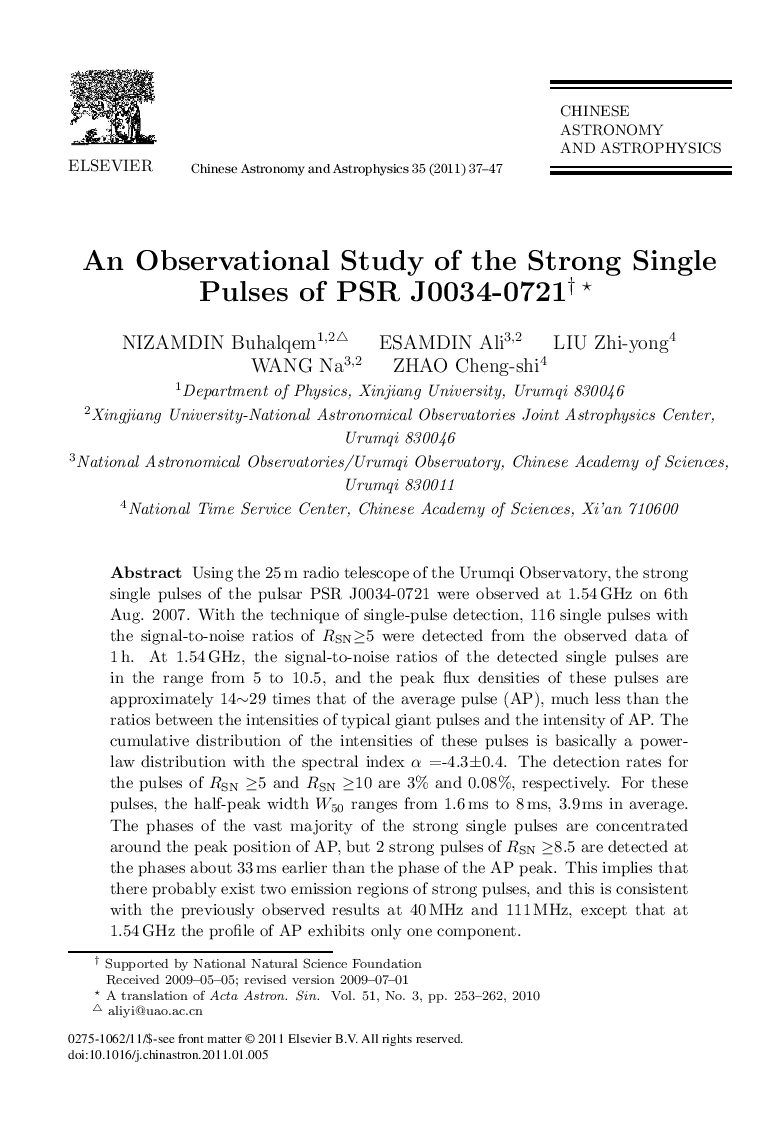| Article ID | Journal | Published Year | Pages | File Type |
|---|---|---|---|---|
| 1772015 | Chinese Astronomy and Astrophysics | 2011 | 11 Pages |
Using the 25m radio telescope of the Urumqi Observatory, the strong single pulses of the pulsar PSR J0034-0721 were observed at 1.54 GHz on 6th Aug. 2007. With the technique of single-pulse detection, 116 single pulses with the signal-to-noise ratios of RSN≥5 were detected from the observed data of 1 h. At 1.54 GHz, the signal-to-noise ratios of the detected single pulses are in the range from 5 to 10.5, and the peak flux densities of these pulses are approximately 14∼29 times that of the average pulse (AP), much less than the ratios between the intensities of typical giant pulses and the intensity of AP. The cumulative distribution of the intensities of these pulses is basically a powerlaw distribution with the spectral index α = −4.3 ± 0.4. The detection rates for the pulses of RSN≥5 and RSN≥10 are 3% and 0.08%, respectively. For these pulses, the half-peak width W50 ranges from 1.6 ms to 8 ms, 3.9 ms in average. The phases of the vast majority of the strong single pulses are concentrated around the peak position of AP, but 2 strong pulses of RSN≥8.5 are detected at the phases about 33 ms earlier than the phase of the AP peak. This implies that there probably exist two emission regions of strong pulses, and this is consistent with the previously observed results at 40 MHz and 111 MHz, except that at 1.54 GHz the profile of AP exhibits only one component.
